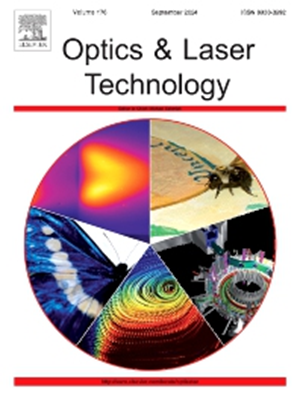NPCA-wbcNet: advanced neuron-position correlation attention network for white blood cell classification via optical microscopic imaging in leukemia diagnosis
IF 4.6
2区 物理与天体物理
Q1 OPTICS
引用次数: 0
Abstract
Optical microscopic imaging is crucial for identifying and enumerating different types of white blood cells (WBCs), which are essential for diagnosing hematological disorders like leukemia. However, the subtle morphological differences among various WBC types pose challenges to accurate classification, even for experienced experts. Deep learning has emerged as a powerful tool to enhance optical microscopic imaging in WBC classification. Therefore, this study proposes a novel convolutional neural network with neuron-position correlation attention (NPCA) named NPCA-wbcNet to overcome this challenge of WBC classification. Specifically, the NPCA could effectively generate 3D weights to infer the discrimination and importance of each neuron and establish interactive relationships between different locations and channels, thereby highlighting the location and shape of the target category in the image and enhancing the identification of fine-grained features. Additionally, we replace some regular convolutions with partial convolutions, which makes the model more lightweight and achieves better results in extracting spatial features. We evaluate the performance of our model on DrlWBCs, a new dataset of 24,713 blood smear images with five WBC subtypes. The model achieved an accuracy of 98.46 % for WBC classification, and the acute lymphoblastic leukemia (ALL) diagnostic accuracy on the ALL-IDB2 dataset was 98.08 %. Overall, our method surpasses other state-of-the-art methods in terms of accuracy, precision, and F1-score performance metrics.
NPCA-wbcNet:用于白血病诊断中光学显微成像白细胞分类的高级神经元位置相关注意网络
光学显微成像对于识别和列举不同类型的白细胞(wbc)至关重要,这对于诊断血液学疾病(如白血病)至关重要。然而,各种白细胞类型之间细微的形态差异给准确分类带来了挑战,即使是经验丰富的专家。深度学习已成为增强WBC分类中光学显微成像的有力工具。因此,本研究提出了一种新颖的具有神经元位置相关注意(NPCA)的卷积神经网络NPCA- wbcnet来克服WBC分类的这一挑战。具体来说,NPCA可以有效地生成三维权值来推断每个神经元的区分度和重要性,并建立不同位置和通道之间的交互关系,从而突出目标类别在图像中的位置和形状,增强对细粒度特征的识别。此外,我们用部分卷积代替了部分正则卷积,使得模型更轻量化,在提取空间特征方面取得了更好的效果。我们评估了我们的模型在drlwbc上的性能,drlwbc是一个包含5种WBC亚型的24,713张血液涂片图像的新数据集。该模型对白细胞分类的准确率为98.46%,在ALL- idb2数据集上对急性淋巴细胞白血病(ALL)的诊断准确率为98.08%。总体而言,我们的方法在准确性、精密度和f1分数性能指标方面超过了其他最先进的方法。
本文章由计算机程序翻译,如有差异,请以英文原文为准。
求助全文
约1分钟内获得全文
求助全文
来源期刊
CiteScore
8.50
自引率
10.00%
发文量
1060
审稿时长
3.4 months
期刊介绍:
Optics & Laser Technology aims to provide a vehicle for the publication of a broad range of high quality research and review papers in those fields of scientific and engineering research appertaining to the development and application of the technology of optics and lasers. Papers describing original work in these areas are submitted to rigorous refereeing prior to acceptance for publication.
The scope of Optics & Laser Technology encompasses, but is not restricted to, the following areas:
•development in all types of lasers
•developments in optoelectronic devices and photonics
•developments in new photonics and optical concepts
•developments in conventional optics, optical instruments and components
•techniques of optical metrology, including interferometry and optical fibre sensors
•LIDAR and other non-contact optical measurement techniques, including optical methods in heat and fluid flow
•applications of lasers to materials processing, optical NDT display (including holography) and optical communication
•research and development in the field of laser safety including studies of hazards resulting from the applications of lasers (laser safety, hazards of laser fume)
•developments in optical computing and optical information processing
•developments in new optical materials
•developments in new optical characterization methods and techniques
•developments in quantum optics
•developments in light assisted micro and nanofabrication methods and techniques
•developments in nanophotonics and biophotonics
•developments in imaging processing and systems

 求助内容:
求助内容: 应助结果提醒方式:
应助结果提醒方式:


